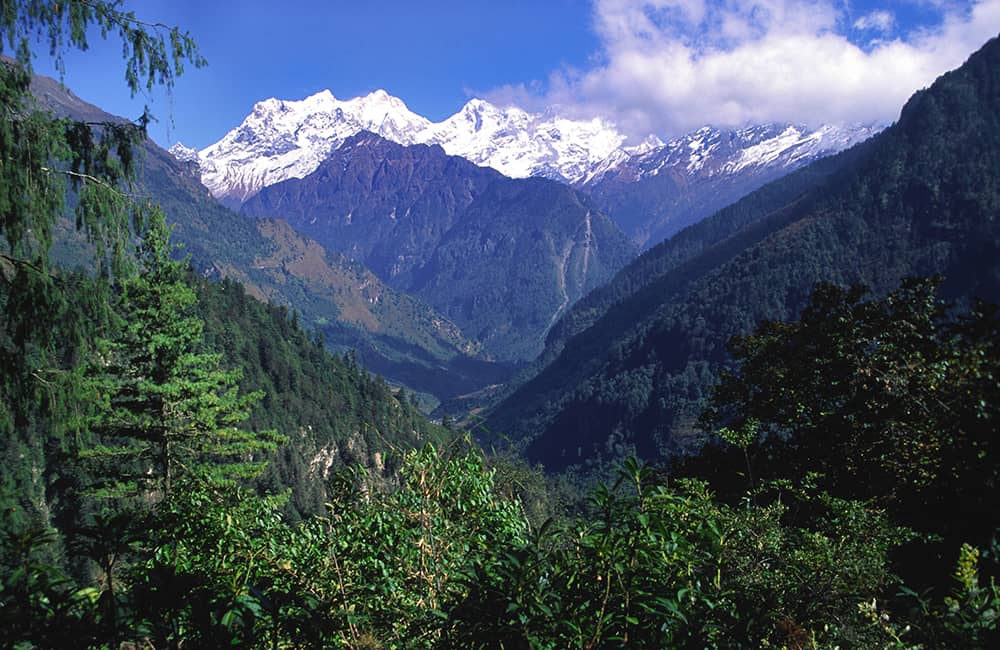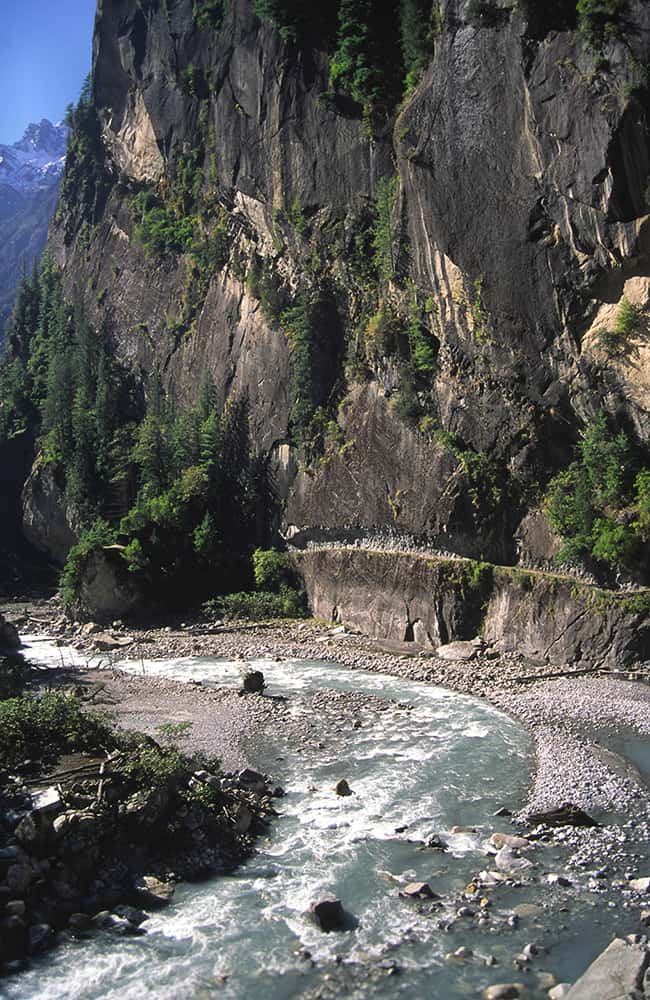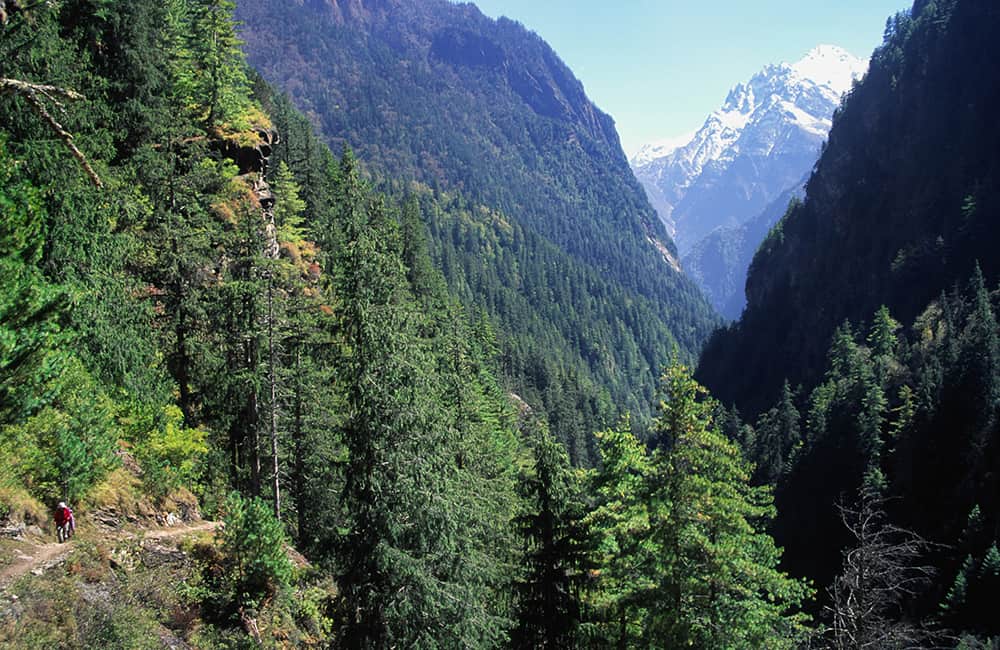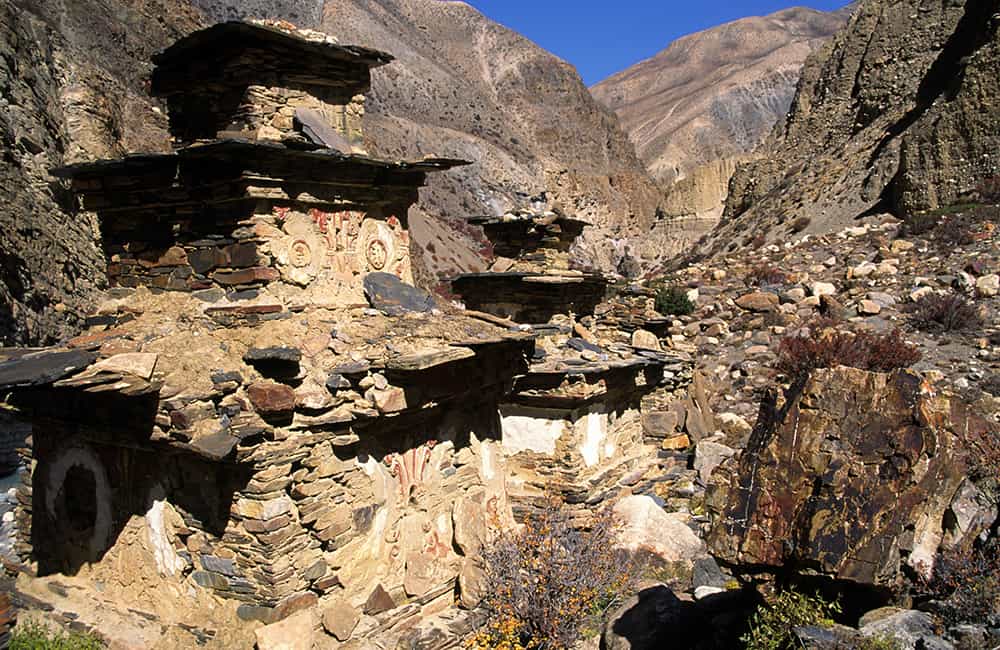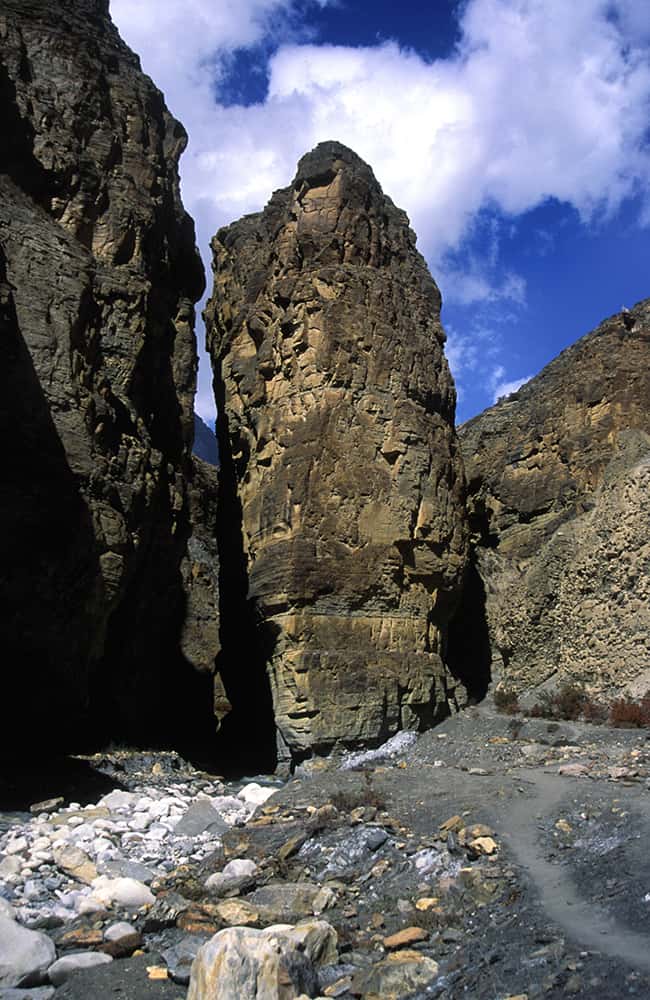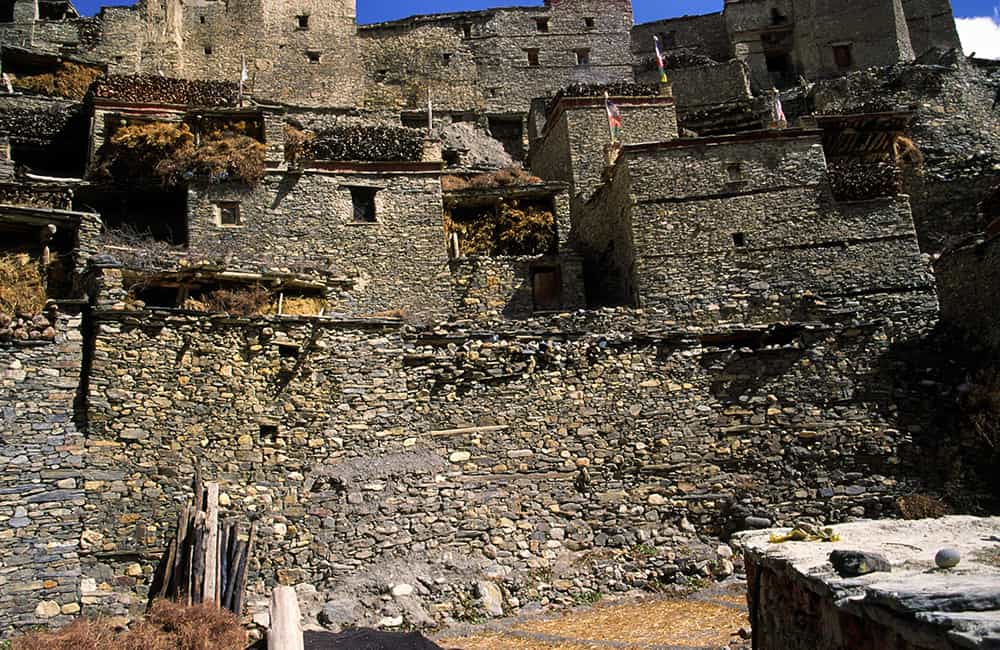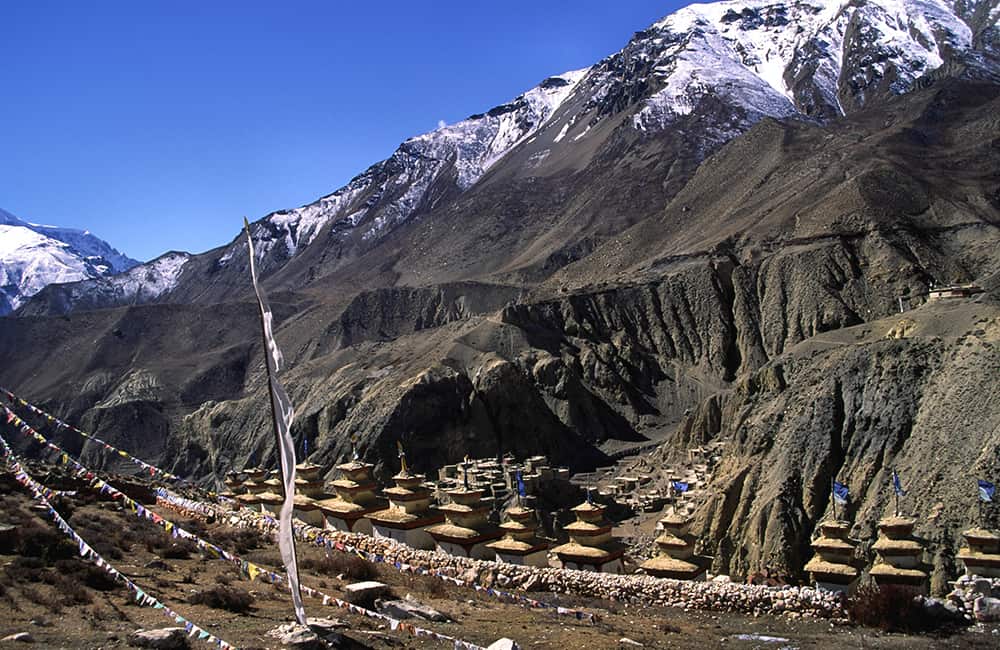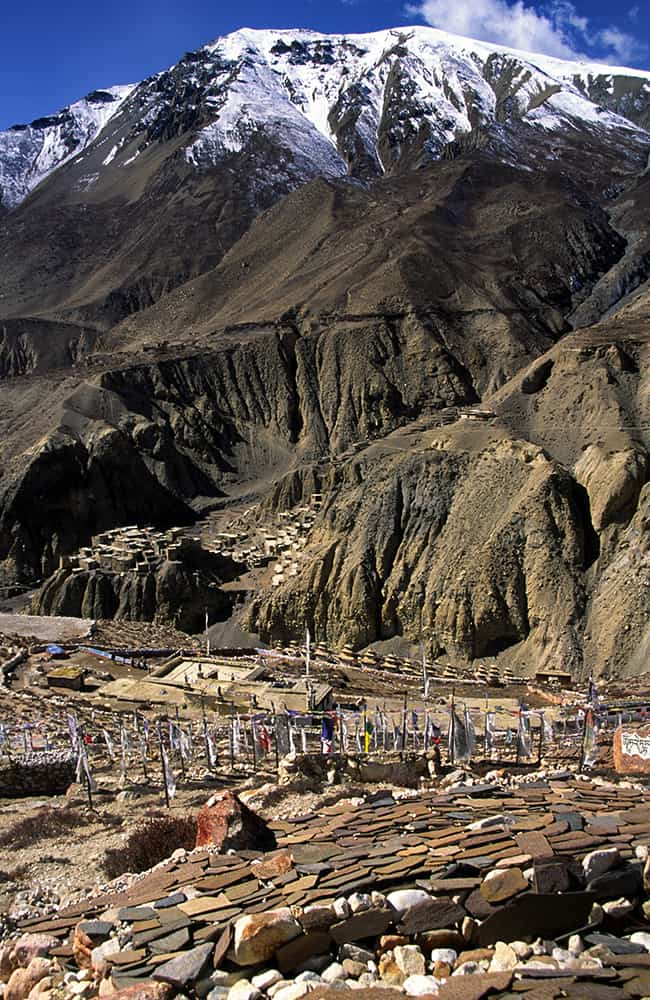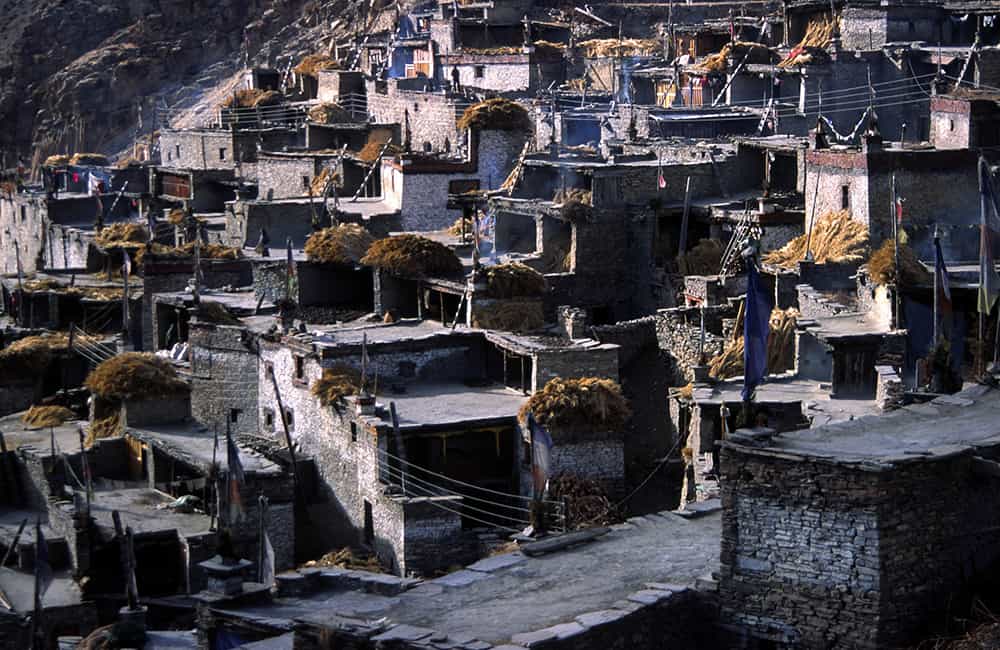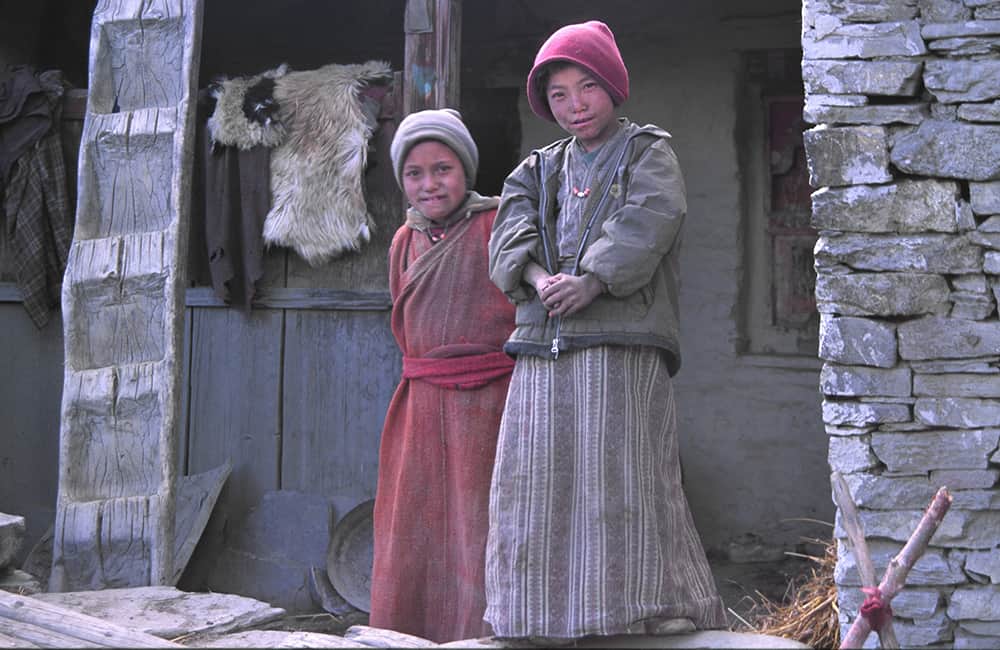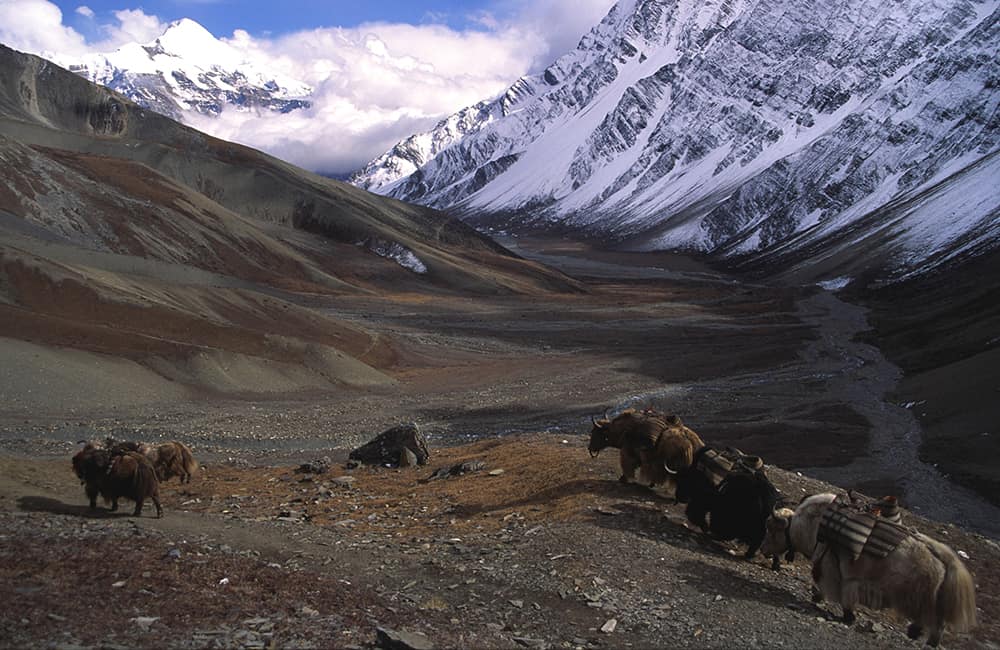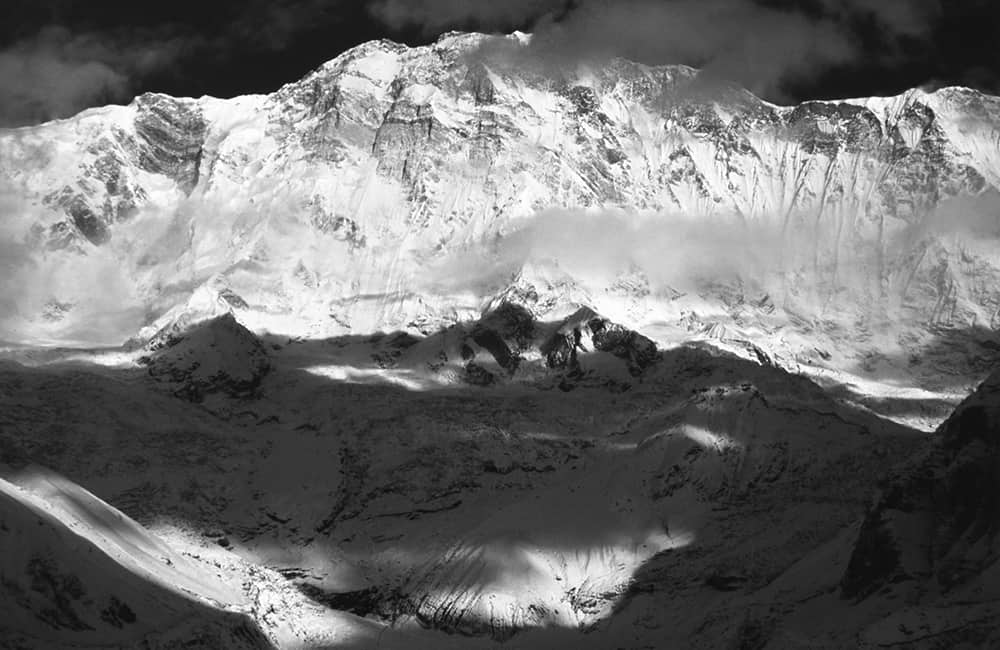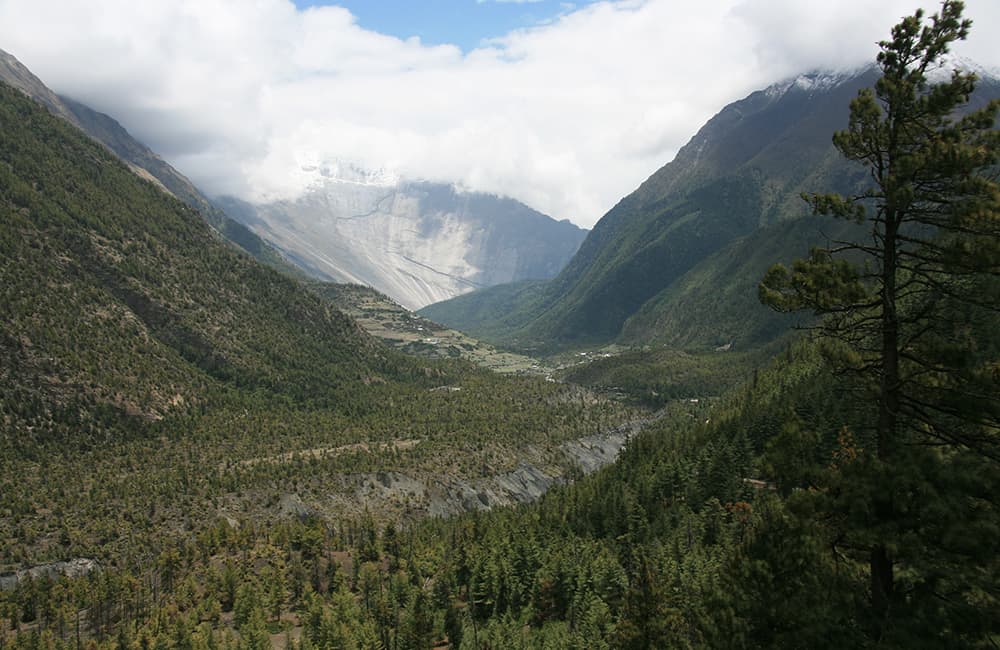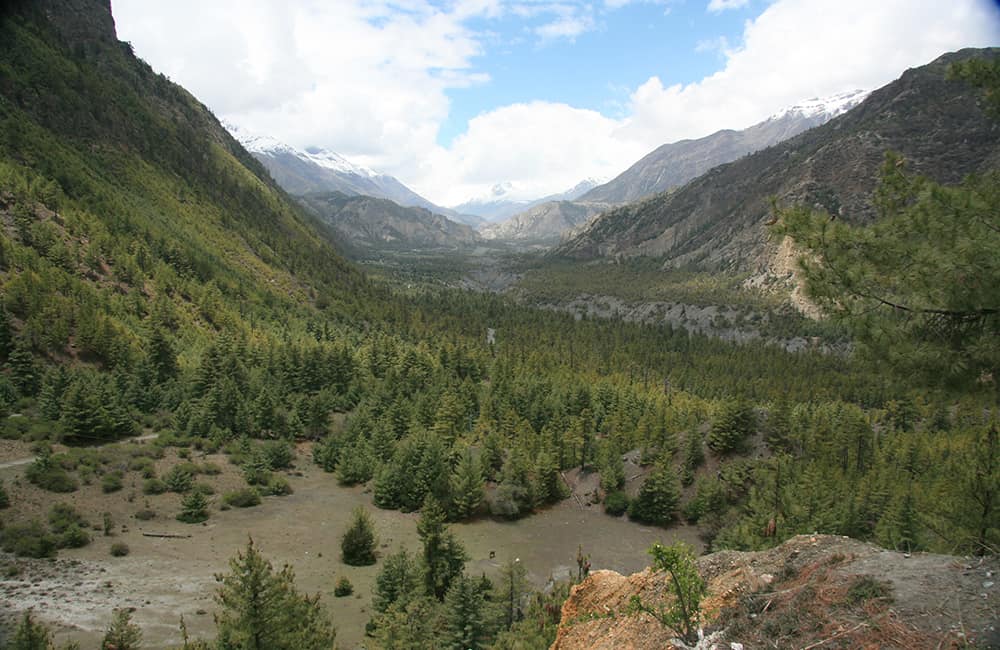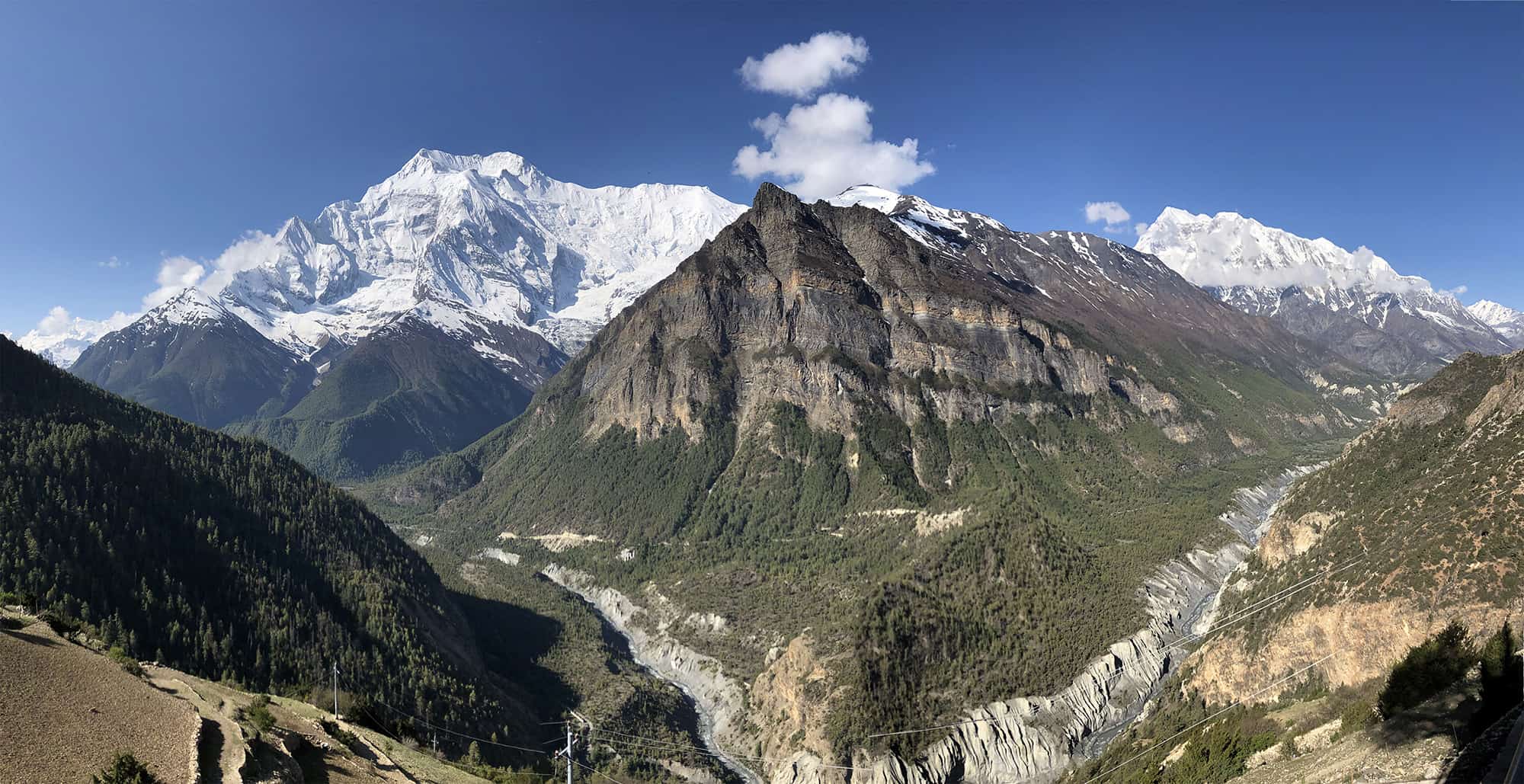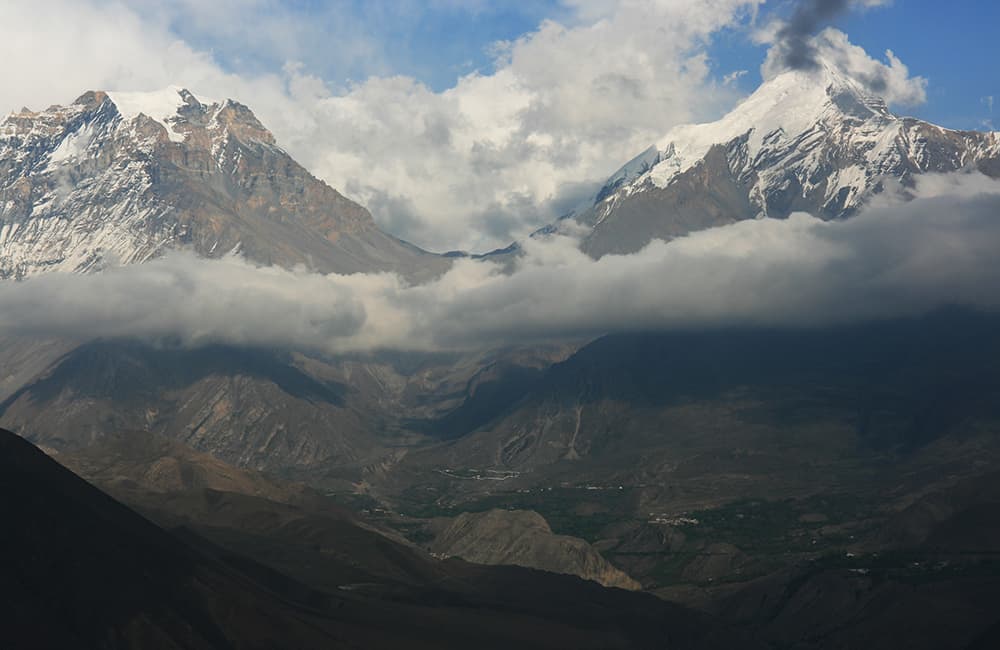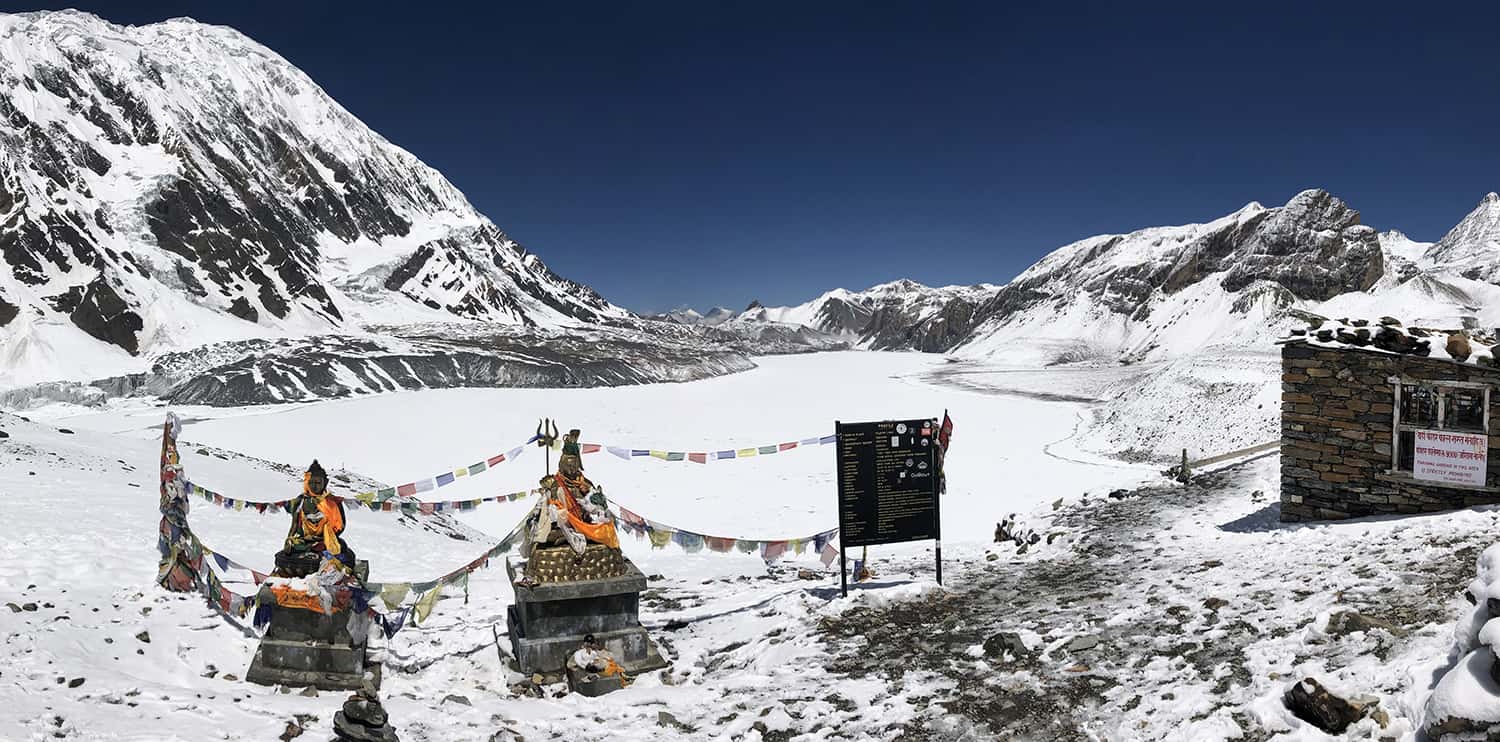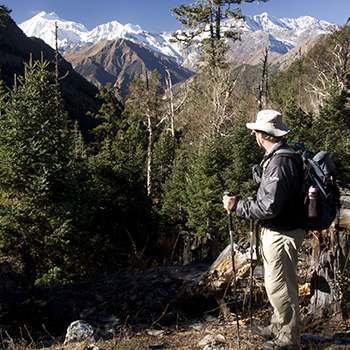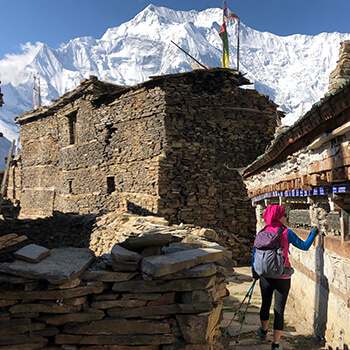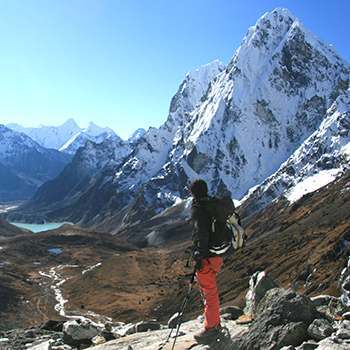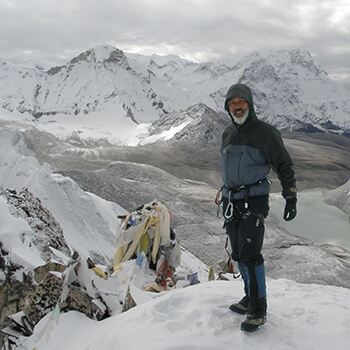Annapurna Circuit, Naar, Phu
Annapurna Circuit, Naar and Phu Trek
The trek to the Annapurna Circuit, Naar and Phu represents the future of trekking in the Annapurna region. Ancient Tibetan communities combine with the extraordinary alpine views from Kang La and Thorung La, and teahouses throughout. Without any doubt, the Annapurna Circuit, Naar and Phu trek is magnificent!
Key points:
- Trekking Grade: Grade 3
- Duration & distance: About 20 days total
- Gradient: Short steep sections
- Quality of path: Formed track, some obstacles
- Quality of markings: Signs at beginning, end and major intersections
- Experience required: Some walking experience required
- Walking times: Less than 9 hours a day
- Steps: Steps most days
- Highest point: 5416m
- Best season: Mar-May and Oct-Jan
- Accommodation: Camping and teahouses
- Recommended map: NP107 GHT Series Annapurna, Naar & Phu, Himalayan Map House, 2017
- Recommended Guide Book: Nepal Trekking and the Great Himalaya Trail, Trailblazer, 2020.

GRADE 3
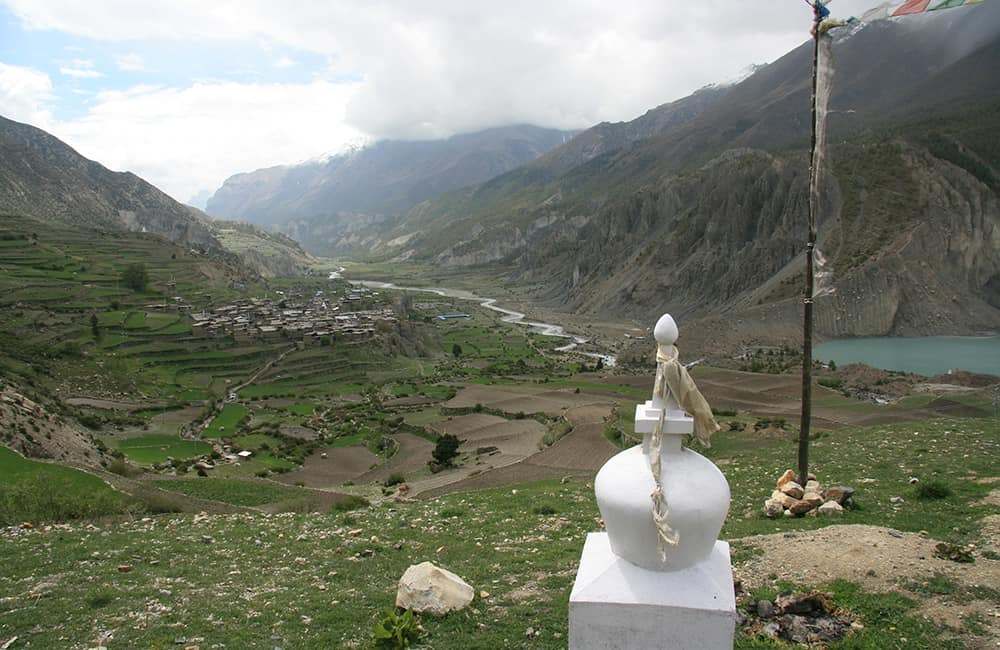
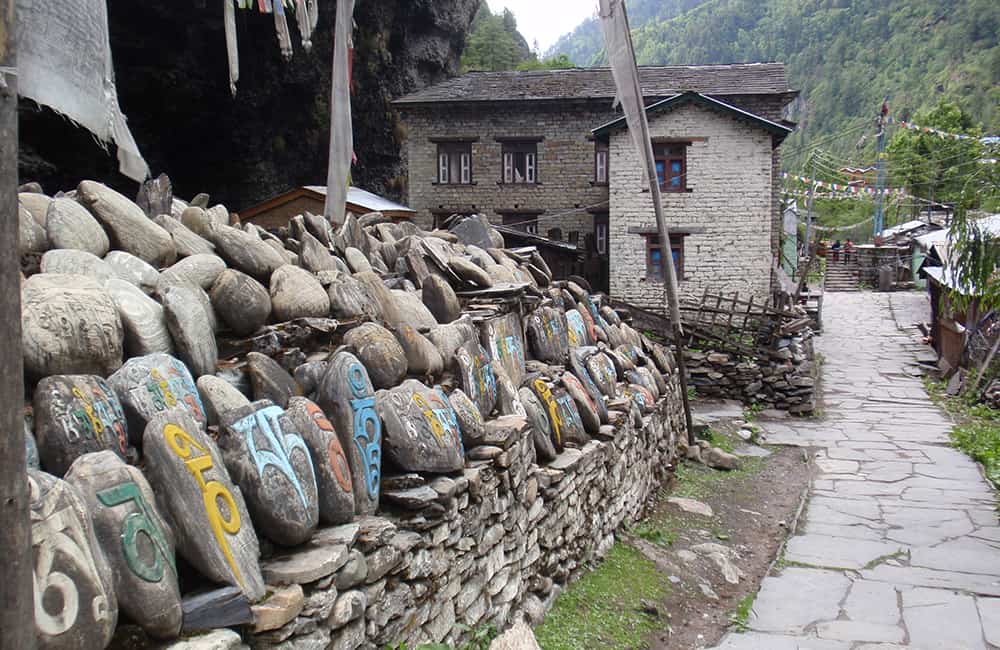
When to Trek Annapurna Circuit, Naar and Phu?
The valleys of the Annapurna Circuit, Naar and Phu are rarely closed to trekking. Only a period from February to mid-March could see the Thorung La blocked by snow. However, large amounts of snow can fall in intense storms throughout the year, so you should always be cautious of impending weather changes. Lying in the rain-shadow of the Annapurna Himal, beyond a steep-sided canyon to the north of Koto, the villages of Naar and Phu receive little rain throughout the year.
Annapurna Circuit, Naar and Phu Accommodation and Permits
The entire Annapurna Circuit, Naar and Phu trails are well serviced by teahouses, some of which are quite luxurious with ensuite bathrooms! Phu, where there are simple teahouses, lies just a few kilometres from the Tibetan border. It’s a medieval stonewalled village that sits precariously on a rock spur overlooked by Tashi Gompa, and is also famous for the head Lama who is an expert in traditional medicine. Naar is to the south of Phu behind a popular trekking peak, Pisang Peak (6091m), and has teahouses and shops where you can purchase supplies.
The Annapurna Conservation Area Project (ACAP) is the largest protected biodiversity area in Nepal. Local community groups are pushing hard for improved services and support from Kathmandu, and have invested heavily in tourism facilities. The more tourists are attracted to the area, the more value local communities will feel their natural environment has to offer, and therefore, the more likely they will help to preserve their region. So use local facilities and services where you can and try to encourage sustainable practices at all times.
As of August 2019, you will require the ACAP entry fee of NRs 3000 per person (foreigners), NRs 1000 (SAARC nationals) and NRs 100 (Nepali nationals). Plus trekkers to the Manang District Areas of Naar, Phu, and northern area of Tilche Village and Thochhe will need the following permits:
- From September to November US$90 per week per person.
- From December to August US$75 per week per person.

Annapurna Circuit, Naar and Phu Route Options
This trek can be combined with trails to or from Mustang, or via Tilicho Lake to produce some exceptional and challenging itineraries. Most people walk in from Syange and then either fly or drive out of Jomsom. Or if you have the time, follow a new trail from Jomsom/Muktinath down the Kali Gandaki valley all the way back to Pokhara via Ghorepani (see Poon Hill and Khopra Ridge).
GHT and Other Trails in the Annapurna, Naar and Phu Region
GHT through-hikers have many trail options between Besisahar and Beni, which are the two major bus roadheads to the mountains. A few of the more popular options can be used in conjunction with the previous treks, but feel free to create your own trek. This is one of the few areas of Nepal where everywhere you go will welcome you with open arms and be able to provide good-quality tourist facilities.
Syange to Pokhara
For those returning from the Manaslu Circuit, or beginning the Annapurna Circuit, Naar and Phu trek or if you have a little extra time, this trek is a fabulous option. Often called the Royal Trek (Prince Charles from the UK once did a part of it) this trail is hardly trekked and offers a more complete Nepali experience when combined with the major tourist trails. This route description begins from below Syange and heads over to the famous picnic spot of Begnas Tal, which is a short bus ride from Pokhara.
Khudi is a 5-hour walk south from Syange (or a 60-minute jeep drive), and is where you cross the Khudi Khola on a suspension bridge. Next, take a right-hand trail that leads to Sera (870m, 30 mins). From here there is a long series of stone steps that rise above the Boran Khola to Baglungpani (1595m, 3hrs) where there are some great views of Manaslu, Lamjung Himal and the Annapurnas, with the distinctive Macchapuchhare (Fish Tail Peak) standing sentinel.
A long ridge descent via Nalma (1240m, 2hrs) brings you to the Midim Khola, a broad valley that leads down to Karputar (490m, 2½hrs). From here it is 1½ hours to Begnas Tal, which is one of Nepal’s favourite picnic spots. Catch a bus to Pokhara from here (less than an hour).
Tilicho Tal (Lake)
This is a wonderful side trip or route alternative to the Annapurna Circuit, Naar and Phu itinerary. For many years visiting Tilicho Tal (Tilicho Lake) was very hazardous because of dramatic/unpredictable changes in weather and potential rockfall. The potential weather danger still exists but trail improvement across both the rockfall area. The heavily iced Mesokanto La or Mandala La have made this stunning location far more accessible.
This camping-based itinerary takes 4-5 days (Manang to Jomsom) depending on prior acclimatisation and the time you want to spend enjoying Tilicho Tal views. There is a seasonal lodge at Tilicho Base Camp for those who are prepared to trek for a very long, challenging day to Jomsom, thus making a 3-day itinerary.
Take the main trail through Manang at turn left just after the mani wall outside the village. You soon join the road, which you follow until a small trail leads to a suspension bridge, which you cross (over the Marsyangdi Nadi). After a small climb and section through pine forest, the trail rejoins the road all the way to to Khangsar (3734m, 2hrs), where there are teahouses.
Walk through Khangsar and follow the road, which steadily climbs. There is a trail short-cut to the right but is hard to spot, so you might find yourself following the road all the way to Thare Gompa. Now the road ends and you climb switchbacks to Siri Kharka (4070m, 1½hrs), where there are two teahouses. About 20 minutes uphill, beyond the first teahouses, there is another, but this is only open in the main trekking season. It is now a very easy trail for about 1hr to the beginning of the main landslide and rockfall area. Care should be taken while crossing this section as rockfall is common!
It takes 30-40 minutes to cross the main landslide area to safe scrub-covered hillside, but then you round the corner of the valley to another landslide area, which only ends just before you reach Tilicho Base Camp (4150m, 2½hrs from Siri). There are three large teahouses here, which are often busy even out of season.
Up to Tilicho Lake
It’s about a 3hr climb to Tilicho Tal (4990m) on a well-formed path, and there are marker poles higher up if covered in snow. The teahouse at the lake viewpoint is very basic and only open for short periods during the main trekking season – you must check in Tilicho Base Camp if it is possible to stay.
If you want to continue to Jomsom, the safest and fastest route goes behind a minor peak to the north of the lake and crosses ‘Eastern Pass’ (5340m, 3hrs) before descending to a kharka at the northern end of the lake (4940m, 1hr). The views throughout the day are wonderful. Both Mandala Pass (aka Donkey pass, 5200m) and Mesokanto La (5350m) are 1½-hour climb away.
You should very carefully assess the descent from either pass before committing yourself!
From either pass, it is a very long descent on poorly formed trails that are often confused with animal tracks in patches of thorn bush. There are no rest or good camping sites before you reach Thinigaon (2840m, 5hrs) and then to Jomsom (2720m, 30 mins), where there are many good teahouses.
Teri La – from Naar to Lo Manthang [by Ade Summers]
This camping-only trek takes 8 days from Naar without acclimatisation time. As well as a Naar–Phu and ACAP permit, you will also require a Mustang controlled area permit; see Mustang.
From Naar, first ascend the Lapse Khola (aka Labse Khola) on a clear but undulating trail to a campsite in 6-7 hours. A good trail continues to follow the Lapse Khola to the next camp in 5 hours. You now cross back and forth over the Lapse Khola to approach the high camp (5225m, 3hrs) before the pass. Contour up the valley, then start gaining height. You can see Teri La on the left (eastern) skyline, and you’ll soon see the prayer flags.
It is a steep gully ascent to Teri La (5595m, 4hrs) where there are great views of the Dhamodhar Himal, Dhaulagiri, the Annpaurnas and many peaks in Mustang.
It is a steep descent (possibly in snow) into the next valley, where the gradient eases to a good lunch spot beside a river at 5050m (1hr). Follow the valley and then climb a rocky ridge with a small scramble section. Turn right (north) and traverse the ridge to reach a grassy and less rocky ridgeline. Another steep descent brings you to a camp beside the Yak Khola (4730m, 3hrs).
Once Over the Teri La
Remain on the true right side of the valley as you continue descending, crossing minor spurs and a landslide area to a possible lunch spot after 3 hours at 4470m. Continue descending to a confluence of two rivers where there is a steep drop on a zig-zag rocky path. Cross the interesting Dhakrung Khola and climb the far ridge. Contour around a second ridge to a minor pass and then turn sharp right and descend into the Samena Khola valley. Cross the river and a short climb to a big wash out area and campsite at Yakpa (4370m).
It’s a steep climb passing an old deserted village, Purano Kog. The trail can be a bit loose and exposed. Ascend a zigzag path up to a ridge for about 500m before the gradient eases across a flat-ish plateau, with amazing views of Dhaulagiri, Nilgiri and Tilicho. Cross a minor ridge at 4730m before traversing around two ridges and descending into the arid Tengga valley. Entering the village is an amazing sight, first crossing a long suspension bridge and then passing the village Kani and Mani walls.
There is a campsite beside the village (3240, 6hrs). Climb about 200m to the plateau behind Tengge, where there are some incredible eroded rock flutes. Descend to a lunch spot near the river, where there are more views of Dhaulagiri. After lunch cross the Dhechyang Khola, which can be tricky and ascend a steep moraine wall.
Once on top traverse across a plateau and then descend to Yara Gaon (3650m) via a good bridge. An easy walk takes you down the valley to the valley junction with the Kali Gandaki river, where you cross a good bridge at Dhi Gaon (3450m, 5hrs). It’s then a steep climb to the Lo Manthang trail (3809m, 6hrs, see South-east of Lo Manthang).
How Much does the Annapurna, Naar and Phuntsho Trek Cost?
To help you budget and plan, we’ve made a comprehensive costing explanation on How Much Does the GHT Cost? But here’s a simplified breakdown.
GHT Annapurna, Naar and Phu Trek for 20-days estimated costs:
- Solo as much as possible US$3,990.
- Twin-share with minimum guiding US$2,730 per person.
- Twin-share fully supported US$5,280 per person.
Do you have any questions about costs? Please Get in Touch for more details.
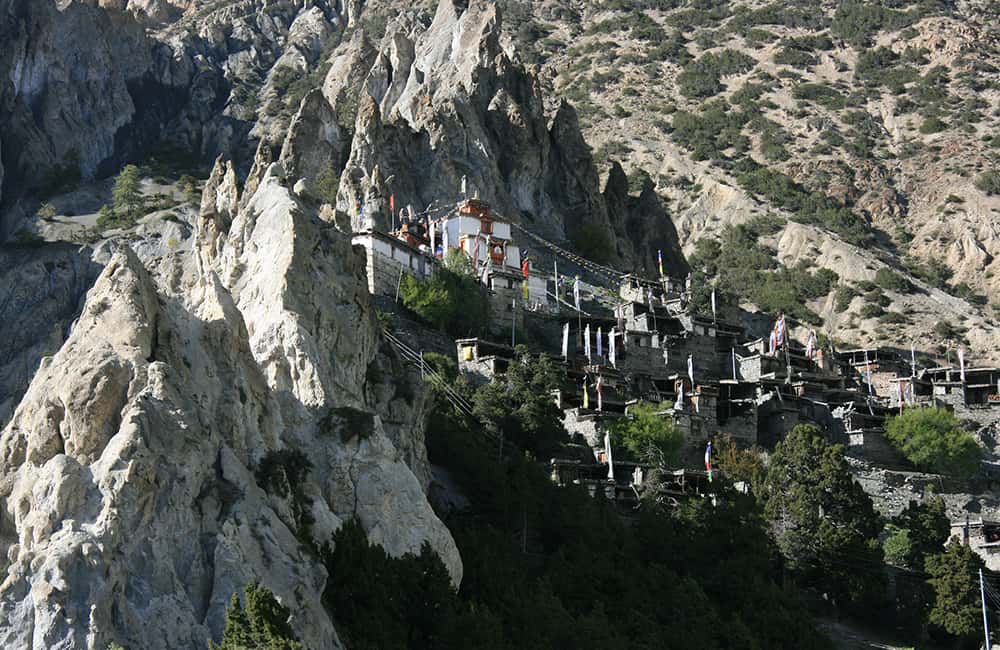
Customisation is Normal
Want to do things a little differently? Maybe take some extra time, or go a bit faster? Or avoid technical sections or combine with other trails? Every GHT trek is different and that changes the price, but please feel free to Get in Touch to ask questions and how to customise your own trek.
Bookings
Please note that www.greathimalayatrail.com does not handle bookings for treks. We are here to inform you about the trails and logistics, but you will need to book through a registered trekking operator in Nepal. If you would like an operator recommendation or feedback on a company you are already talking to, then please Get in Touch.
Your Impacts on the Annapurna, Naar and Phu Trek
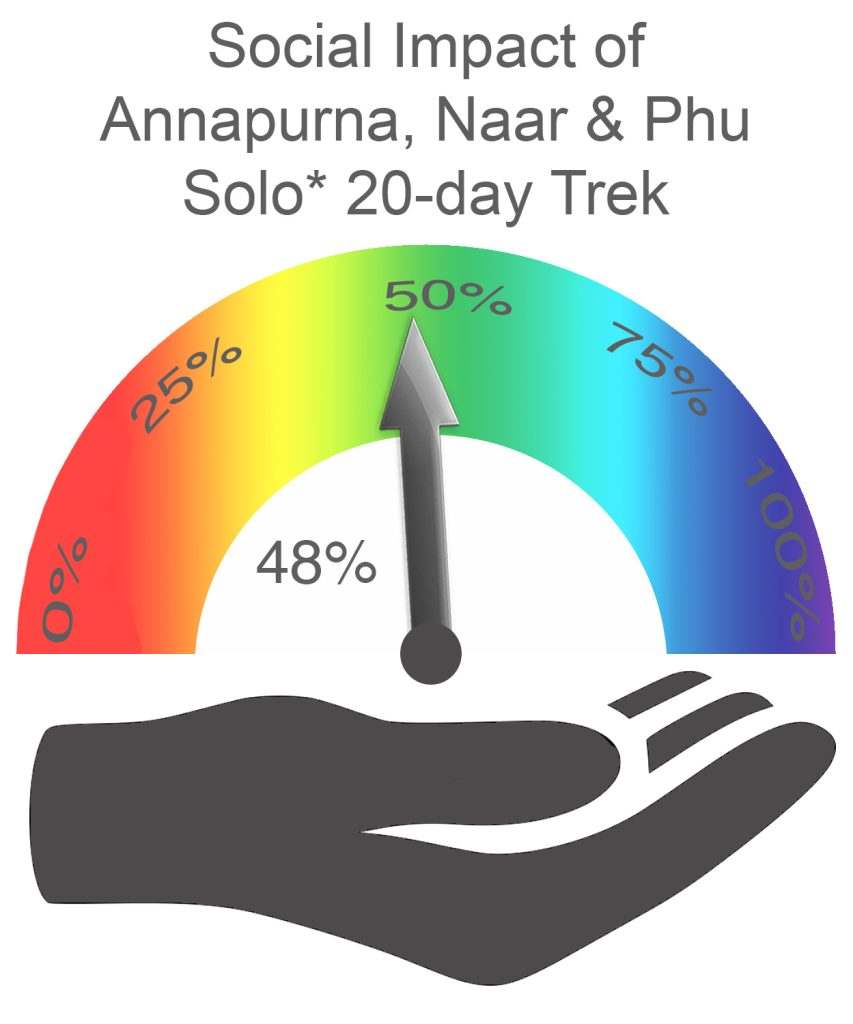
Solo (Independent)
Social, GHG and waste impacts are all not bad compared to other treks.
The long wilderness section means you will have a heavy load of food and fuel, so we expect you’ll try to minimise waste as much as possible.


Twin Share (Independent)
Social, GHG and waste impacts are all not bad compared to other treks.
The long wilderness section means you will have a heavy load of food and fuel, so we expect you’ll try to minimise waste as much as possible.


Camping (supported)
The social impact is not high due to the wilderness section. But GHG and waste impacts are high.
Consider using fuel efficient stoves and using teahouse kitchens for cooking where possible as both will reduce your GHG footprint.

For more information about social, Green House Gas and waste impacts of treks, see The Impact of your Trek.
-
Destination
-
DepartureKathmandu
-
Dress CodeMid-altitude alpine clothing and camping equipment required
-
IncludedAnnapurna Circuit, Naar, Phu
-
GradeGrade 3
-
Idea Date Range15/10/2021
-
Style of TrekCamping and some teahouses







